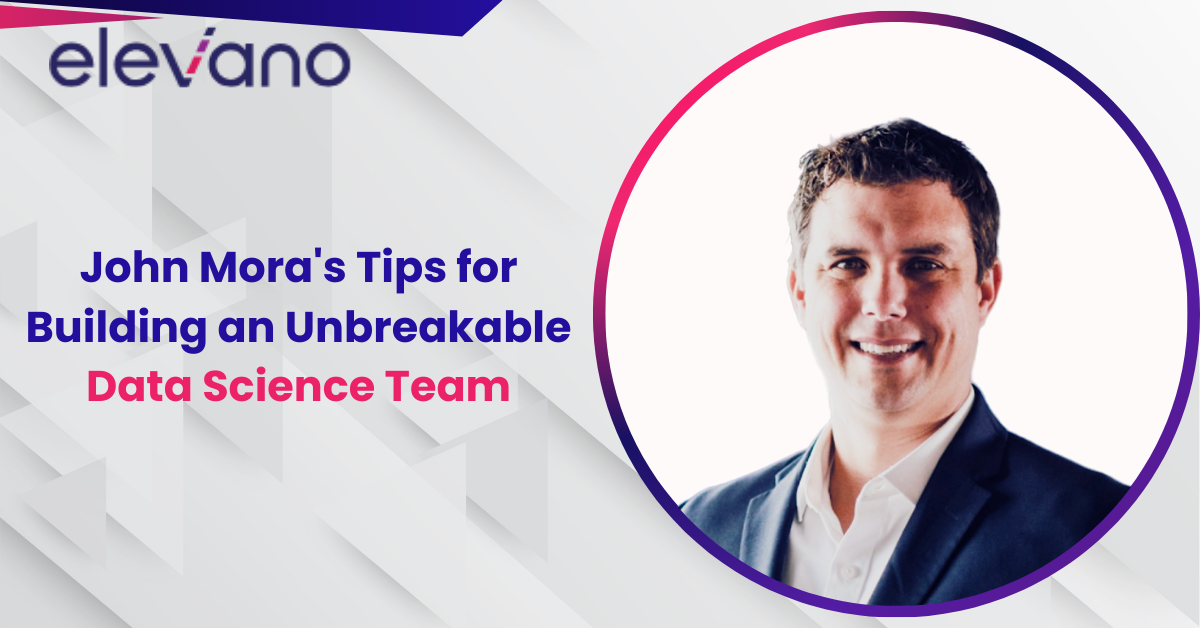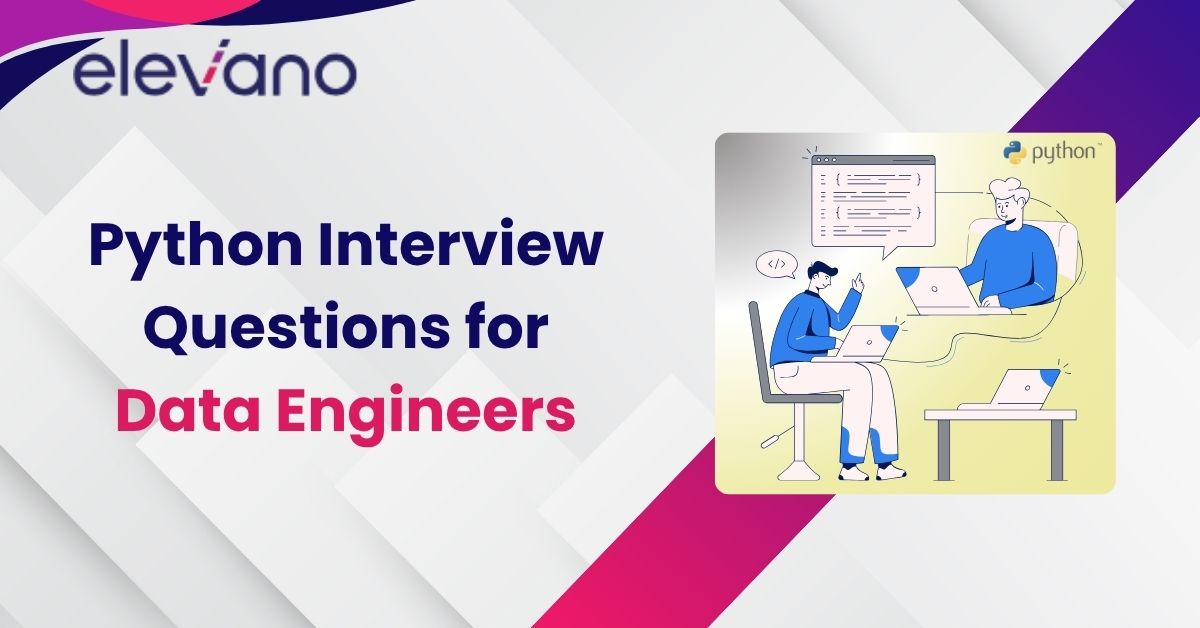John Mora, the Chief Data Scientist at Zephyr, joins us to share powerful insights into building resilient and high-performing data science teams. With a background spanning startups and leadership roles at companies like eHarmony, John now leads a team of data scientists at Zephyr, an ad tech company specializing in contextual targeting for video content across platforms like YouTube and Facebook.
At Zephyr, John’s mission centers around helping brands connect with the right video content while avoiding content that could detract from their message. Managing a dynamic data team, overseeing billions of video data points, and driving innovation in contextual advertising, John brings a unique leadership style to the table — one rooted in immediate trust, open communication, and fostering independent ownership.
This article captures John’s philosophy on building unbreakable teams — from hiring strategies and remote work adaptation to accountability frameworks and leadership growth — all drawn directly from his in-depth conversation on the podcast. Let’s dive into the key strategies and lessons he shared.
Transitioning to Remote Work: Adaptability in Action
John Mora openly admitted that shifting to remote work during the coronavirus outbreak was new for him and his team. Despite his past experience working from home while running a startup, getting back into a full remote setup still came with challenges.
One of his first steps was upgrading his home office. He had to buy new routers because his internet wasn’t reaching every corner of his house. Keeping a defined office space and maintaining strict office hours became a priority.
“So read on,” because that was just the start. To keep the team connected, John emphasized the need to overcommunicate right from the beginning. Weekly team standups and bi-weekly one-on-ones became standard. They even considered adding virtual happy hours after hearing positive feedback from other teams at Zephyr.
Instead of micromanaging, John leaned heavily on trust. He believed that even if he didn’t hear from someone for a day or two, it usually meant they were focused on solving tough problems, not slacking off. Clear communication and a foundation of trust helped the team stay productive without burning out. “But there’s more.” By encouraging casual check-ins like virtual happy hours, John made sure the team kept their connection beyond just work updates.
Building a Culture of Trust from Day One

John Mora believes that trust starts on the first day, not after months of proving yourself. His hiring process is challenging, but once someone joins his team, they walk in with full trust. John trusts that employees want to do good work, will manage their hours responsibly, and will speak up if they face work-related or personal problems.
To help new team members build confidence early, John assigns a starter project. It’s usually something that adds real value but is small enough for a newcomer to complete independently within a few weeks. This gives employees a clear win right away and helps them settle into their role without feeling overwhelmed.
John also encourages open criticism — if it’s respectful and backed by data. He shared that some of his best working relationships came from people who respectfully challenged ideas and brought better solutions. Employees aren’t just expected to follow directions but to think critically and improve processes if they can.
“So read on,” because John’s approach isn’t about control but empowerment. Starting with trust and encouraging critical thinking creates a stronger, more resilient team that isn’t afraid to grow together.
Managing Accountability Without Micromanagement
John doesn’t believe in hovering over his team. Instead, he gives them space — and expects them to own their time and their outcomes. His one-on-ones aren’t for checking off boxes; they’re for support. The responsibility falls on the employee to bring an agenda, raise concerns, or ask for guidance. If someone has nothing to discuss, that’s okay too. The point is to give them the lead.
For newer or more junior team members who may not be used to this setup, John will guide the conversation a bit more. He’ll ask what’s working, what’s not, or whether any team dynamics need attention. But over time, the goal is clear: shift the relationship so the employee is in control of the meeting.
When problems arise, John doesn’t want just complaints. He expects people to come up with options and opinions. Ideally, they will come up with multiple solutions and a recommendation. That way, even if he’s busy or unavailable, progress doesn’t stop. It also forces the team to think critically, not just react.
John encourages team members to think like decision-makers. He believes better results come when people feel trusted to lead, not just execute. It’s how he balances accountability with freedom — and it’s a big part of why his team runs well without being watched.
Keeping the Team Energized and Focused
John uses public speaking as a tool to keep his team sharp. He regularly asks team members to give short presentations—sometimes to just the group, to the wider tech organization, and occasionally even in public. The point isn’t to show off. It’s to force clear thinking. When someone has to explain an idea out loud, they quickly see what holds up and what falls apart.
These presentations are also how John helps the team catch misalignment early. He might ask someone to prepare a 10-minute talk on why they want to pursue a specific project. If they struggle to make a case, that’s a signal. Rather than waste time, the team can pivot quickly and move in a better direction.
John encourages healthy pushback, too. If a team member can defend their idea with evidence, they’re all ears — even if it goes against their own opinion. But if no one can defend it, that’s okay too. It just means they dodged a mistake early. Either way, the team gets sharper, faster, and more focused. That’s how you keep momentum without burnout.
Resource Balancing and Strategic Prioritization
With multiple projects in play, John’s job is to help the team work on what matters most. He partners closely with product, marketing, and sales to understand each idea’s technical lift and business value. Then, he forces-ranks projects, helping the team focus their energy where it counts.
He shared a recent example where their team’s multilingual video model could unlock global opportunities. That got top priority over something like fixing a fragile retraining pipeline — useful, but not as game-changing. This kind of decision-making keeps the company moving toward bigger wins.
But prioritization isn’t always simple. Data scientists have different strengths—some lean more toward engineering, others toward research. If a project requires heavy engineering work, not everyone on the team is the right fit. So John balances project needs with individual skills, making sure each person is set up to succeed without stretching beyond what makes sense.
It’s a constant trade-off. Swarm when you can, specialize when you must, and always align the work with what brings the most value to the business.
Leadership Growth: Letting Go and Trusting the Team
For John, one of the most complex parts of leadership has been learning to let go. With a PhD in machine learning and a strong background in engineering, he’s naturally opinionated about tools, frameworks, and technical decisions. But over time, he realized that what makes a good individual contributor can actually hold back a team if carried into leadership the wrong way.
Instead of controlling decisions, John now focuses on enabling others to make them. He still shares his thoughts, but he resists the urge to override. When a team member wants to use a tool he doesn’t like — say LightGBM instead of something else — he’ll let them make the case. If they can defend their choice with solid reasoning, he supports it. If not, that becomes a learning moment.
Sometimes he even lets them move forward, knowing it might not work, just to give them room to prove him wrong — or to learn from the outcome. As long as the decision was thought through, discussed openly, and supported by data, the whole team shares ownership. That mindset keeps the team learning, experimenting, and improving together.
Hiring for a High-Trust, High-Curiosity Team

John’s hiring bar is high, and for good reason. He wants people who are not only technically strong but also naturally curious and willing to challenge ideas. His interview process includes coding tasks, machine learning problem setups, and system design questions — but he’s not just looking for the right answers. He wants to see how someone thinks, adapts, and recovers from a wrong approach.
He looks for people who ask questions, who read research papers, and who stay engaged with new ideas. On his team, curiosity isn’t a nice-to-have — it’s a must. One of his favorite things is when candidates walk through a complex idea, notice a flaw in their answer, and pivot on the spot. That kind of self-awareness, he says, matters more than pretending to have it all figured out.
Inside the team, that curiosity is encouraged through reading groups, peer learning, and open discussion. But John also looks for balance. He wants people who can admit when they’re wrong, rethink an approach, and move forward without ego. That mindset, along with strong opinions that are loosely held, is what makes someone not just a good hire but a great teammate.
Career Lessons: From Startup Founder to Data Science Leader
Before leading teams, John ran his startup, and it didn’t work out. He was young, excited, and convinced that burying himself in code would lead to a breakthrough. But he admits now that he jumped in too fast. He trusted people without asking hard questions, skipped research on the business model, and underestimated how tough specific industries, like healthcare, really are. Looking back, he wishes he had paused to learn more before going all in.
Still, the experience shaped his path. When the startup ended, John reentered the workforce at eHarmony as a senior machine learning engineer. From day one, he was honest about wanting to grow into leadership. He did the work, made the case, and when his manager left, he raised his hand. That led to his promotion to director — not because he waited, but because he asked.
His story is a reminder that failure doesn’t end careers — it redirects them. And ambition only works when it’s paired with clarity, timing, and a willingness to learn. As John says, working with others again after being your boss can be refreshing. It gives you people to bounce ideas off of and helps you grow faster than going it alone.
Conclusion
John Mora’s approach to leadership is built on a simple but powerful foundation: trust first, stay curious, and communicate openly. From how he hires, to how he runs meetings, to how he handles failure, his mindset is consistent — empower people early, give them space to grow, and expect them to think.
Whether he’s helping a new hire gain confidence, letting go of technical control, or encouraging data-backed debate, John’s focus is always on building a team that learns together, pivots quickly, and shares wins and losses openly. And that’s the real takeaway: great teams aren’t managed into success. They’re thrown into it.




